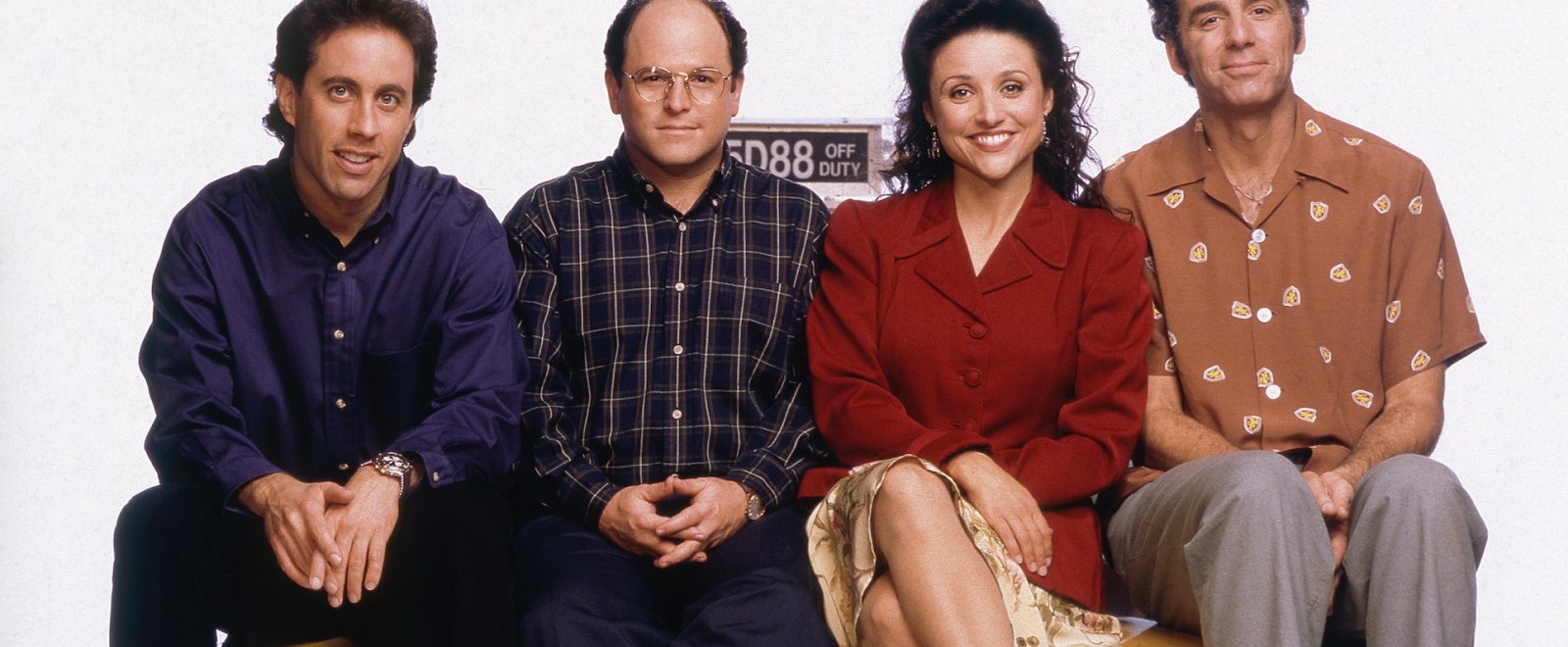During an acclaimed season four, Seinfeld settled into its permanent home: Thursday nights. “Seinfeld, which has not performed well this season opposite ABC’s Home Improvement on Wednesdays, will move to Thursdays at 9:30 pm,” the Los Angeles Times wrote at the time. “With the loss of The Cosby Show last season and Cheers next season, NBC hopes its well-regarded series will keep the network strong on Thursdays.”
It was a masterstroke of scheduling: after the switch, Seinfeld stayed in the top three of the most-watched shows on TV, after never landing in the top-20 for the first four seasons, and finished as *the* most-watched show during seasons six and nine. Seinfeld went out on top, literally, so it’s no wonder that in 2015, Hulu paid $130 million for the streaming rights to the sitcom (Hulu, fittingly, also owns Home Improvement). But four years later, that’s a steal compared to what Netflix recently slapped on the counter:
Netflix has landed worldwide rights to the iconic sitcom [Seinfeld] in a five-year deal with distributor Sony. The show will move from current rightsholder Hulu when its deal is up in 2021. Sources tell the Hollywood Reporter that the new Seinfeld streaming deal is worth more than $500 million and covers global rights.
It’s obvious why Netflix wanted Seinfeld: the streamer is losing Friends to HBO Max in 2020 and The Office to NBC’s streaming platform. Despite those series going off the air in 2004 and 2013, respectively, they’re two of the most popular selections on Netflix; according to Nielsen figures, Netflix users streamed 52 billion-plus minutes of The Office in 2018 and 32.6 billion minutes of Friends. That’s a lot of minutes that are about to go away and, potentially, a lot of subscribers. Can Seinfeld keep people from bolting to another of the 549 streaming services that are expected to launch in the next few years?
I wouldn’t be so sure. Simply put, in 2019, Seinfeld isn’t as popular as Friends or The Office. As CNBC’s Alex Sherman tweeted following the acquisition (sic’d), “Hulu paid $130 million for Seinfeld back in 2015 – a six-year deal for U.S. rights. Source says Seinfeld accounted for less than one percent of Hulu’s viewing. The Office accounted for seven percent of Netflix and Friends four percent, according to third-party data.”
Netflix could land Seinfeld in part because Sony Pictures distributed the show, and Sony doesn't have its own streaming service — unlike NBC (distributed The Office) and WarnerMedia (Friends). So Sony could sell to highest bidder without conflict.
— Alex Sherman (@sherman4949) September 16, 2019
Friends, The Office, and Seinfeld are all NBC sitcoms, but the first two have more a lot in common than the third. They’re both, especially in the early seasons, love stories — Rachel and Ross and Jim and Pam belong among the most iconic relationships in TV history — and that makes for an easy hook to binge-viewers. Especially when they’re set in relatable locations, like a drab workplace or a coffee shop. Seinfeld takes place in a familiar setting, too, but the characters within Monk’s Café, Jerry, George, Elaine, and Kramer, are, well, jerks. It’s the entire point of the show: “No hugging, no learning.”
At the end of a long day, or before work, or while folding laundry, sometimes you don’t want to watch a show about bad people — we’re surrounded by bad every minute of every day — you want the safe comedy about the chicken and the duck, or the show that, with the exception of Michael’s hatred of Toby, was rarely malicious in its humor. Unlike Seinfeld (which is why it’s better than the other two, but I digress). It’s impossible to know for sure, but I imagine a majority of the 52 billion-plus minutes Netflix subscribers spent on The Office were of the passive variety, when the episodes aren’t really being watched so much as functioning as background noise. I’ve done it. Choosing a random episode of The Office to put on while getting dressed for a night out is easier than endlessly browsing Spotify for what you want to listen to or, shudder the thought, talking to another human. Who needs friends when you have Friends? Seinfeld doesn’t function the same way — it’s (something) unpredictable, whereas The Office and especially Friends follow a formula. (It’s telling that the dark “The Dinner Party” is often singled out as the best episode of The Office — nearly every episode of Seinfeld is as dark as “The Dinner Party.”) People like formulas. It’s why The Big Bang Theory, the most formulaic mega-popular sitcom in recent years, is a billion-dollar-plus empire. Seinfeld also demands your attention more than the average comedy, but, as Netflix should expect, it won’t get as much attention as The Office or Friends.
Anyway, if you’ll excuse me, I’m going to watch “Beach Games” for the 12th time.







